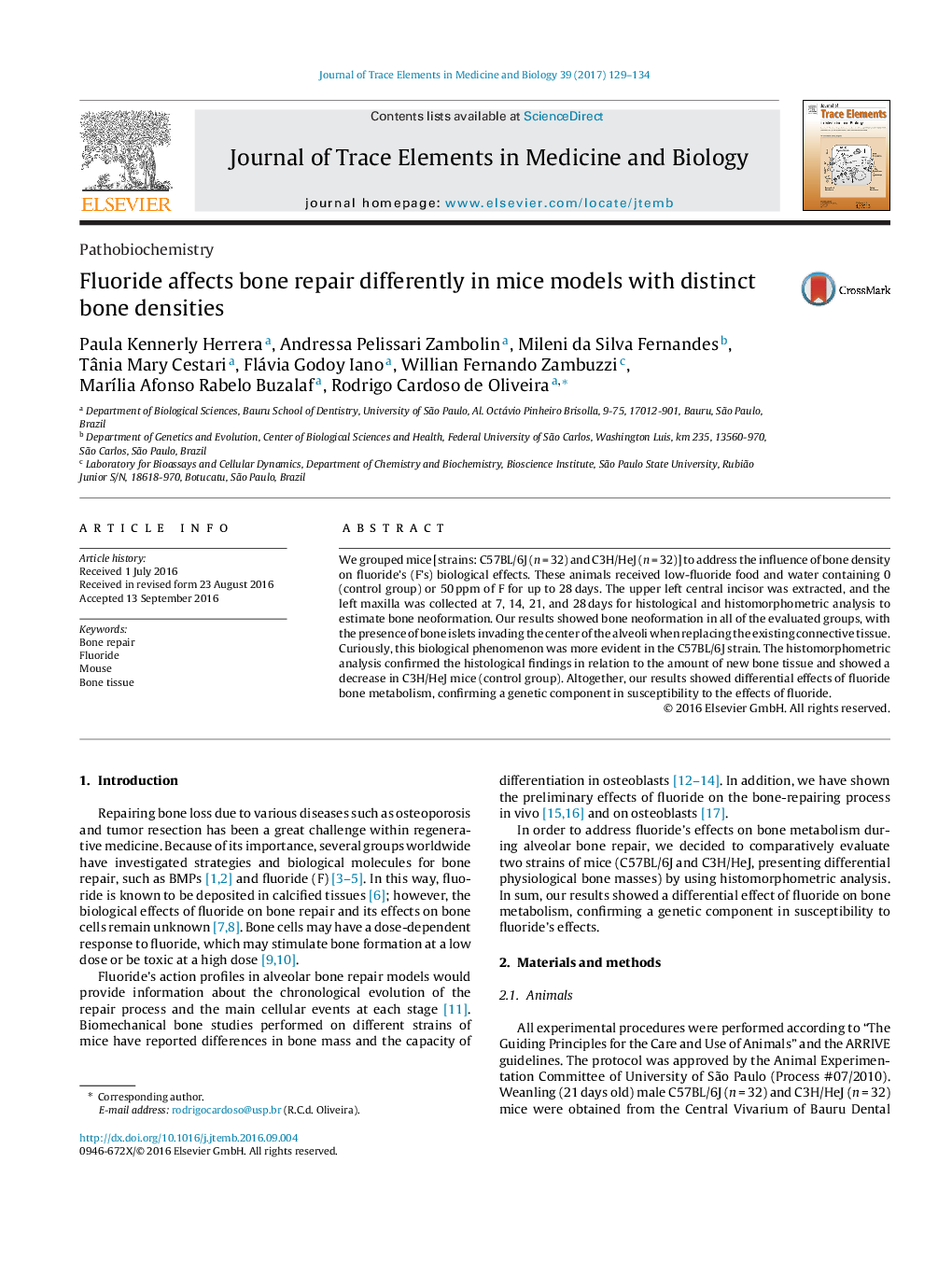| Article ID | Journal | Published Year | Pages | File Type |
|---|---|---|---|---|
| 7639036 | Journal of Trace Elements in Medicine and Biology | 2017 | 6 Pages |
Abstract
We grouped mice [strains: C57BL/6J (n = 32) and C3H/HeJ (n = 32)] to address the influence of bone density on fluoride's (F's) biological effects. These animals received low-fluoride food and water containing 0 (control group) or 50 ppm of F for up to 28 days. The upper left central incisor was extracted, and the left maxilla was collected at 7, 14, 21, and 28 days for histological and histomorphometric analysis to estimate bone neoformation. Our results showed bone neoformation in all of the evaluated groups, with the presence of bone islets invading the center of the alveoli when replacing the existing connective tissue. Curiously, this biological phenomenon was more evident in the C57BL/6J strain. The histomorphometric analysis confirmed the histological findings in relation to the amount of new bone tissue and showed a decrease in C3H/HeJ mice (control group). Altogether, our results showed differential effects of fluoride bone metabolism, confirming a genetic component in susceptibility to the effects of fluoride.
Keywords
Related Topics
Physical Sciences and Engineering
Chemistry
Analytical Chemistry
Authors
Paula Kennerly Herrera, Andressa Pelissari Zambolin, Mileni da Silva Fernandes, Tânia Mary Cestari, Flávia Godoy Iano, Willian Fernando Zambuzzi, MarÃlia Afonso Rabelo Buzalaf, Rodrigo Cardoso de Oliveira,
